Dreaming about visiting the Philippines sometime soon?
Here’s a list of 30 popular Filipino street foods you can enjoy when traveling in the Philippines!
1. Lechon Manok
Lechon Manok is the street version of roasted chicken. You can find places selling chicken almost everywhere, and they usually open in the evening. It’s best for dinner or pulutan (Filipino term for food when drinking).
Price: $3 (150 pesos)
2. Puto Bumbong
Puto Bumbong is one of the traditional Christmas foods in the Philippines. It’s sticky rice with a purple color. It’s served with butter or margarine and you can add coconut grains on top, mixed with sugar.
Price: $0.5 (25 pesos)
3. Bibingka
Bibingka (pictured on the right) is another popular Filipino street food eaten during Christmas. This egg based dessert is eaten alongside Puto Bumbong (pictured left). These foods are usually served on a banana leaf.
Price: $1 (40 pesos)
4. Sisig
Pork Sisig is made with chopped pig’s face and ears, with chicken liver. It’s usually seasoned with chili red peppers and calamansi (golden lime).
Price: $1 (50 pesos)
5. Halo-Halo
Halo-halo is the most popular summer dessert in the Philippines. It consists of shaved ice and evaporated milk, with a mix of sweet fruits and other sweet ingredients such as corn, coconut, sweet beans and more.
Price: $1-2 (30-70 pesos)
6. Palabok
Palabok a noodle dish with cooked shrimps and shrimp sauce, pork, crushed chicharon, tofu and fried garlic. It’s served anytime of the day, from breakfast to dinner.
Price: $1-2 (30-70 pesos)
7. Pancit
Pancit is a Filipino noodle dish mixed with pork, chicken and vegetables. It’s served for breakfast and merienda (afternoon snack).
Price: $0.5 (25 pesos)
7. Adobo
Adobo consists of chicken or pork marinated with vinegar, soy sauce and garlic. It’s one of the most famous dishes in the Philippines.
Price: $1-2 (40-60 pesos)
8. Puto
Puto is the Filipino name for a steamed rice cake. Top it up with butter, coconut or cheese.
Price: $0.10 (5-10 pesos)
9. Ice Cream Sandwich
Ice cream inside bread. For me, this is one of the weirdest foods in the Philippines!
Price: $0.25 (20 pesos)
10. Lechon
Lechon is a pork dish. The whole pig is roasted over charcoal. In the Philippines this dish is commonly served during big family celebrations or special occasions. Filipinos eat the meat with their hands.
Price: $1-10 (50-1000 pesos)
11. Lumpiang Shanghai
Lumpiang is the Filipino name for fried spring rolls.
Price: $0.10 (5-10 pesos)
12. Smoothies
There are plenty of tasty fruit Smoothies in the Philippines. Mango, strawberry, papaya… choose your favorite!
Price: $1.5 (60-80 pesos)
13. Bangus
Bangus is the Filipino name for milkfish, which is usually fried and served with soya or vinegar and garlic.
Price: $2 (60-80 pesos)
14. Tilapia
Tilapia is a fish normally stuffed and cooked with tomatoes and other vegetables.
Price: $2 (60-80 pesos)
15. Mami
Mami is a soup with noodles, chicken, beef, pork, wonton dumplings, intestines and boiled egg.
Price: $1 (30-40 pesos)
16. Arroz Caldo
Arroz Caldo is a Filipino soup with rice, to be eaten hot.
Price: $0.5 (20 pesos)
17. Empanadas
Empanadas are the most popular street eat in Ilocos, Northern Philippines.
Prices: $0.5-1 (20-40 pesos)
18. Tocino
Tocino is pork meat from the belly. It’s very popular in the Philippines.
Price: $1-2 (40-70 pesos)
19. Longanisa
Longanisas are sausages with spices, usually preserved with garlic. They taste very sweet.
Price: $1-2 (40-70 pesos)
20. Balut
Balut is a developing duck embryo. It’s eaten after boiled.
Price: $0.20 (10 pesos)
21. Tapsilog
Tapsilong is a Filipino a meal consisting of beef, garlic fried rice and fried egg. The beef is also called Tapa.
Price: $1 (40-50 pesos)
22. Ube
Ube is a dessert made from boiled and mashed purple yam. It’s really sweet and tasty.
Price: $0.5-1 (30-50 pesos)
23. Turon
Turon is a sweet banana spring roll. The banana is rolled on an eggroll wrapper and fried crispy with glazed sugar.
Price: $0.20 (10-20 pesos)
24. Pan de Sal
Pan the Sal is the main bread in the Philippines. It’s almost like a main commodity in every household. It’s a bread roll made of flour, eggs, yeast, sugar and salt. Commonly eaten with butter too.
Price: $0.05 (2 pesos)
25. Taho
Taho is a snack food made from fresh soft tofu and sago pearl. It’s very sweet.
Price: $0.10 (10 pesos)
26. Leche Flan
Leche Flan is a typical Filipino dessert made of eggs and milk, with soft caramel on the top.
Price: $1 (40 pesos)
27. Sugar apple
It’s the fruit of Annona squamosa.
Price: $1/kilo (40 pesos kilo)
28. Okoy
Okoy or Ukoy is the Philippines’ version of shrimp fritters. Okoy is cooked by mixing very small shrimps (with the heads and shells still on) with flour, cornstarch, egg batter and deep fried until it forms the usual Okoy shape (see the image above). It can be paired with rice and any dish, and tastes really good with vinegar and chili dip.
Price: $0.25 (10 pesos)
29. Kilawin
Kilawin is one of the tastiest dishes I have tried in small canteens (carinderias) in the Philippines. It is grilled pork belly soaked in vinegar. This is great to eat with rice (like almost all the dishes in the country), or as a snack when drinking beer.
Price: $1 (40 pesos)
30. Champorado
Champorado is one of the most common breakfast foods in the Philippines. It is rice cooked with cocoa powder, with the option of adding milk and sugar for serving (which almost everyone does!) This truly matches the Filipino culture of eating rice with most of their dishes. It’s also a favorite to eat during rainy days. Champorado is usually homemade, but some street stores sell it too.
Price: $0.25 (20-30 pesos)
A lot of these Filipino street foods fall under my really cheap but delicious food radar!
Eating cheaply while traveling around the Philippines is actually very easy. If I had to pick a favorite, I’d go with Sisig (number 4) and Palabok (number 6). I love paring those foods with rice and beer.
Regarding Balut, I have only tried it once to taste it. It’s a challenge, because not all foreigners can actually eat it!
How about you?
What street foods would you like to try in the Philippines?
Hit us with your thoughts in the comments.
Buen viaje amigos!
Ruben Arribas is a Spanish traveler who has been to 70+ countries around the world. If you value real cheap travel guides and offbeat destinations, he is your go-to guy. Read his tips and stories in Gamin Traveler and join the community on Facebook and Twitter.
Article’s featured photo by Ian Sane

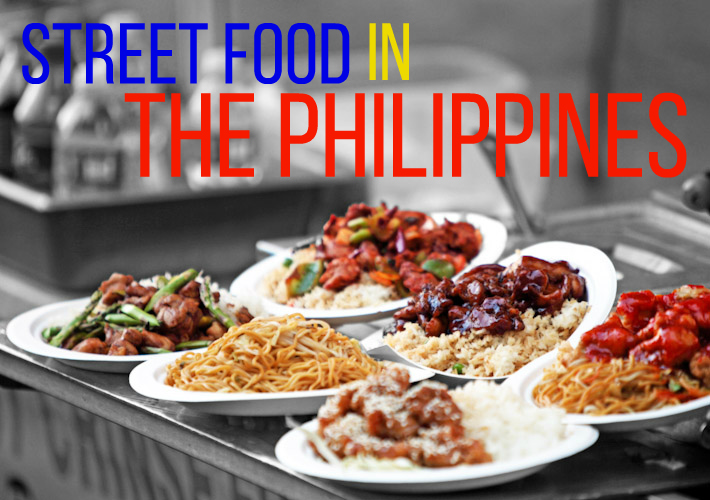
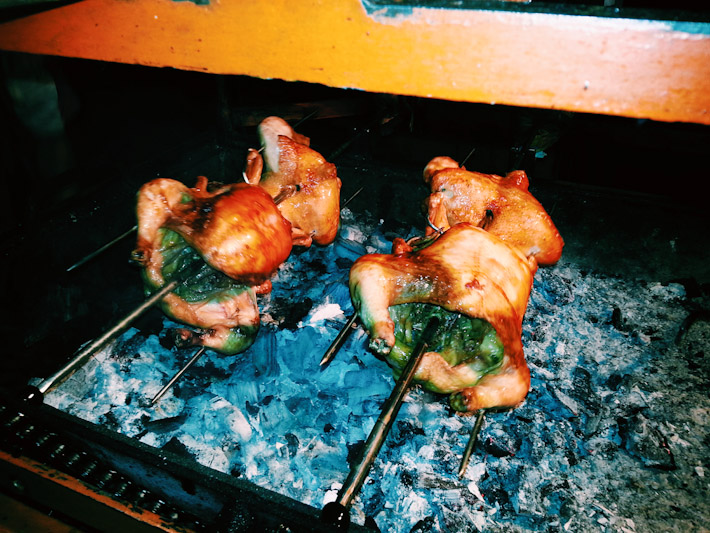
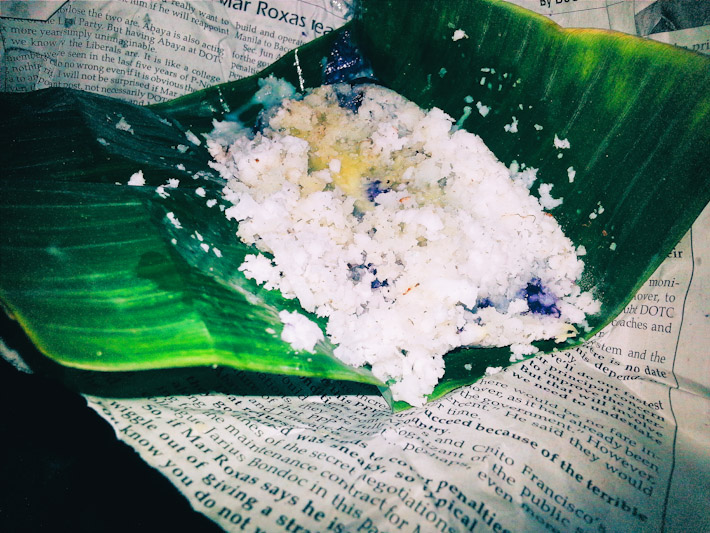
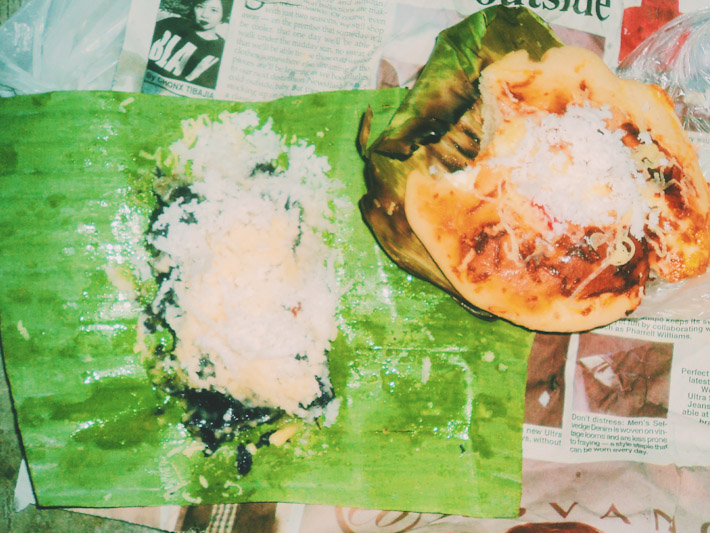
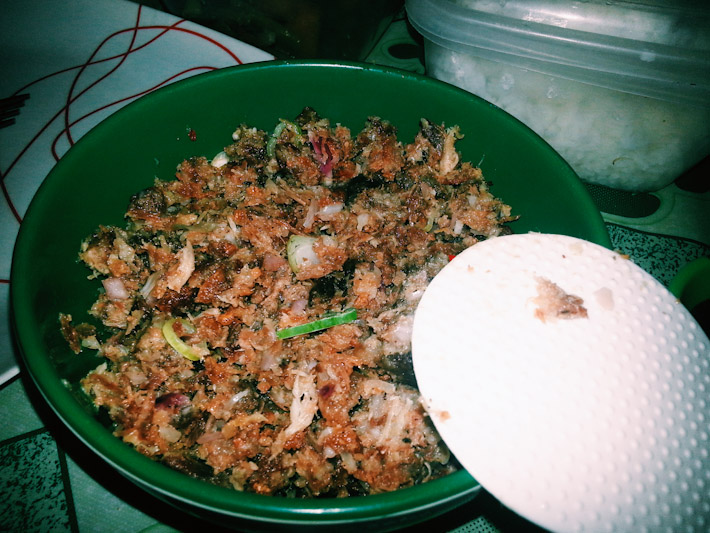
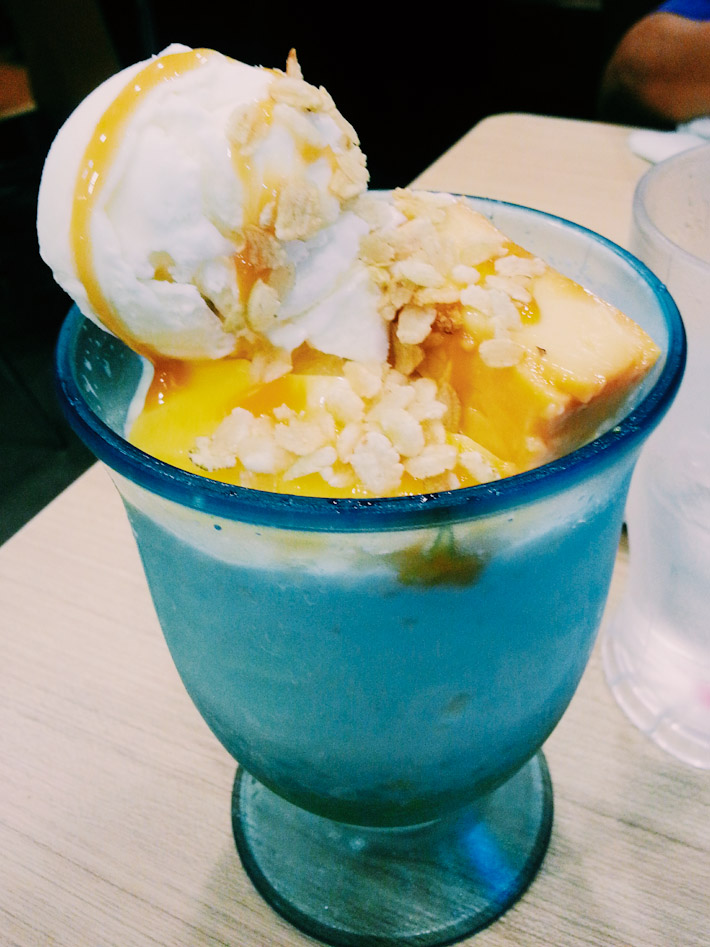
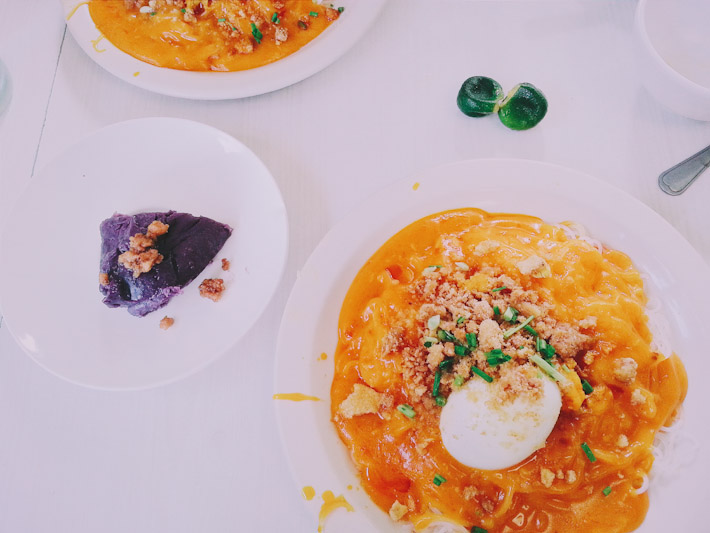
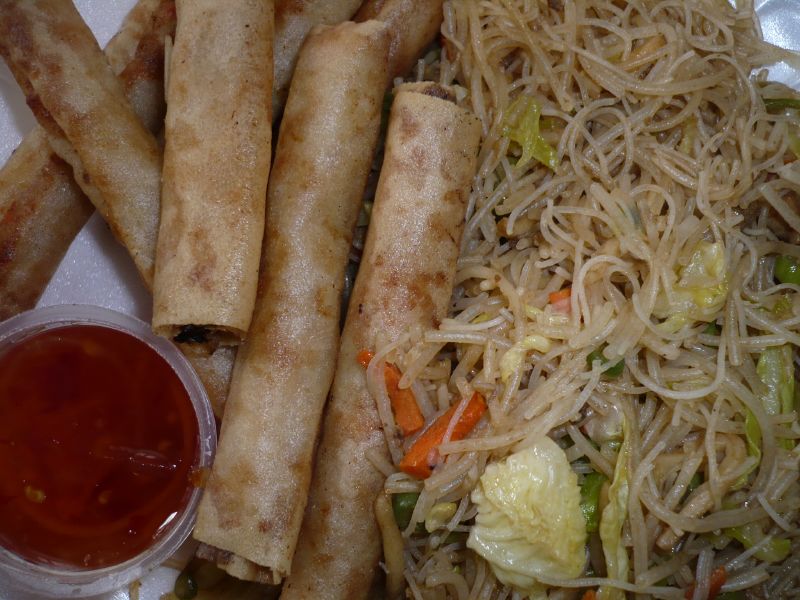
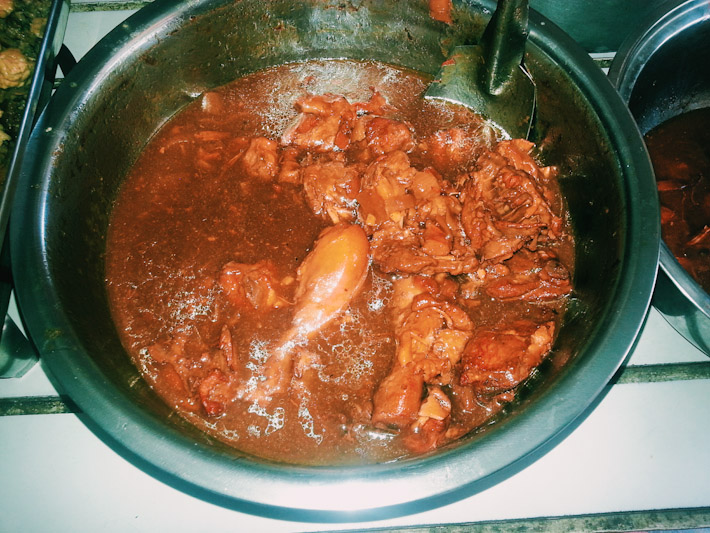
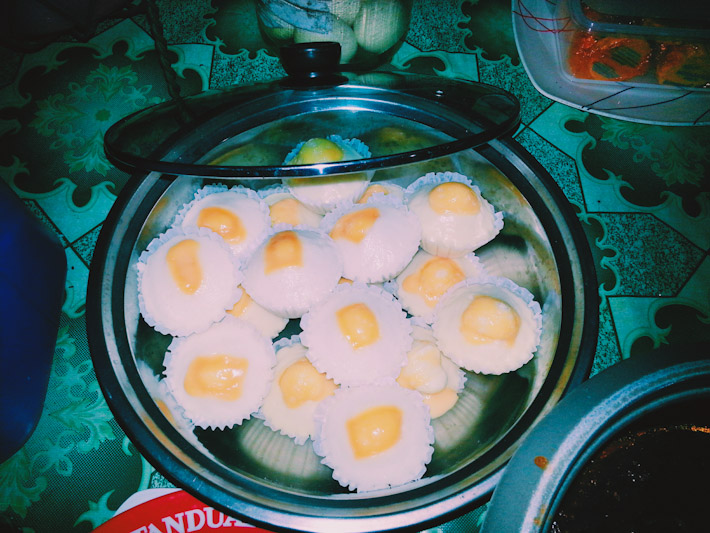
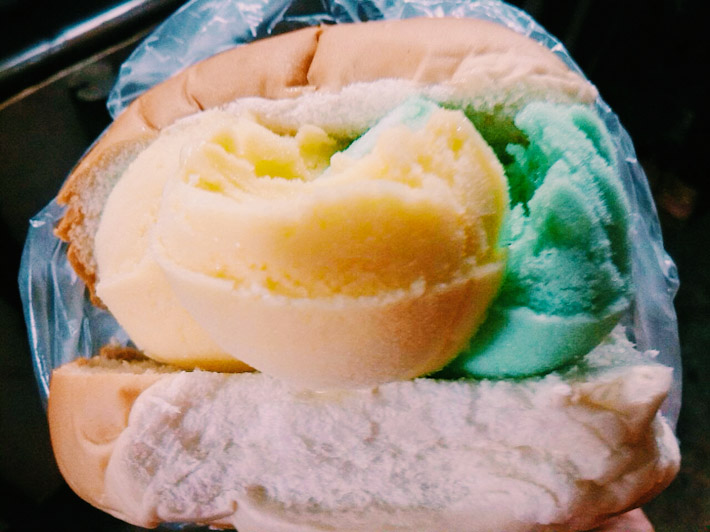
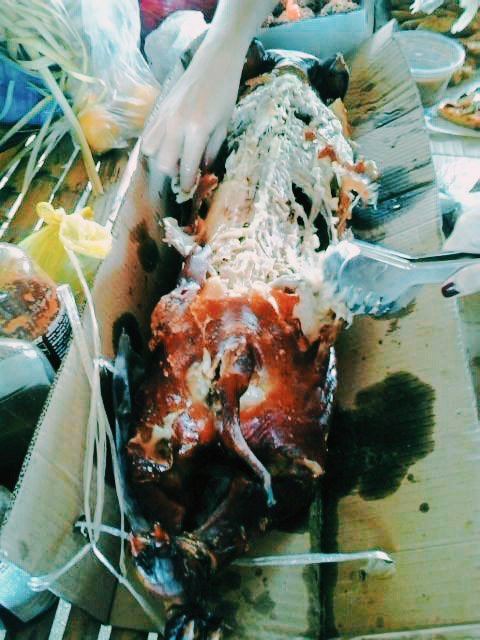
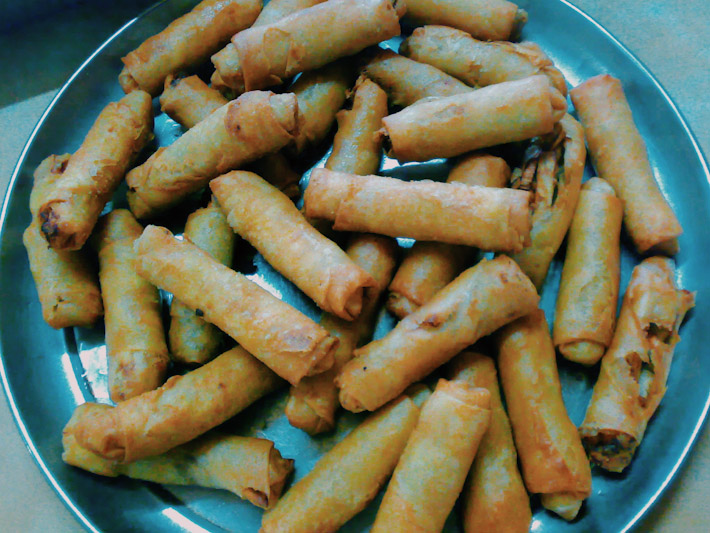

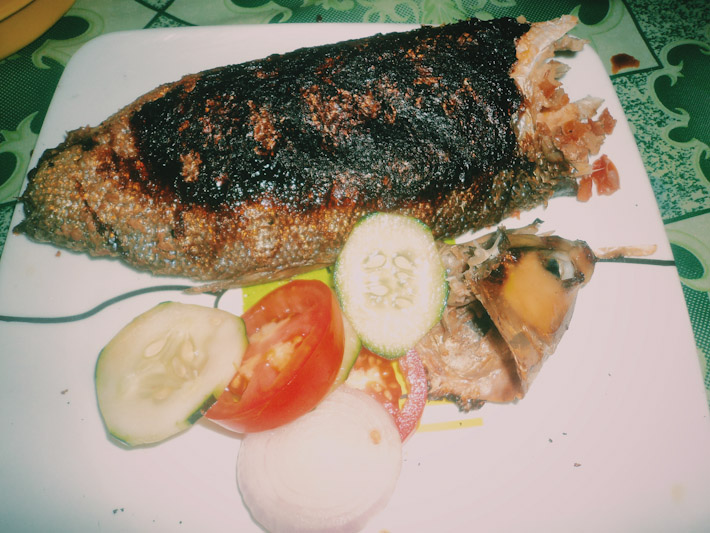
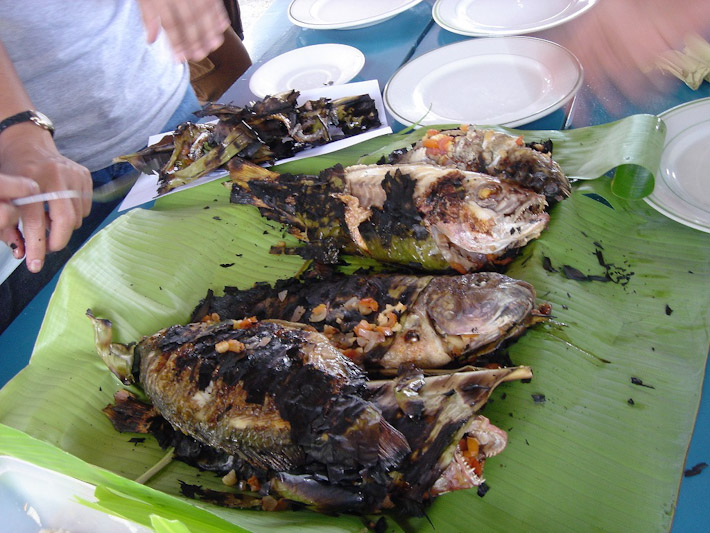
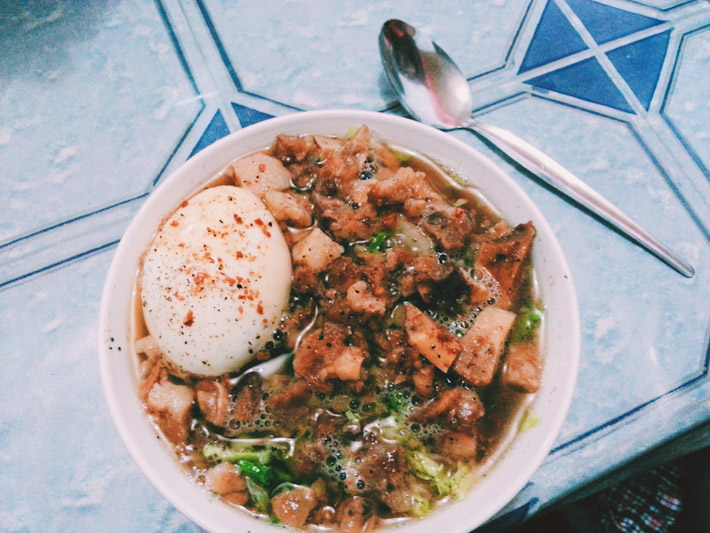
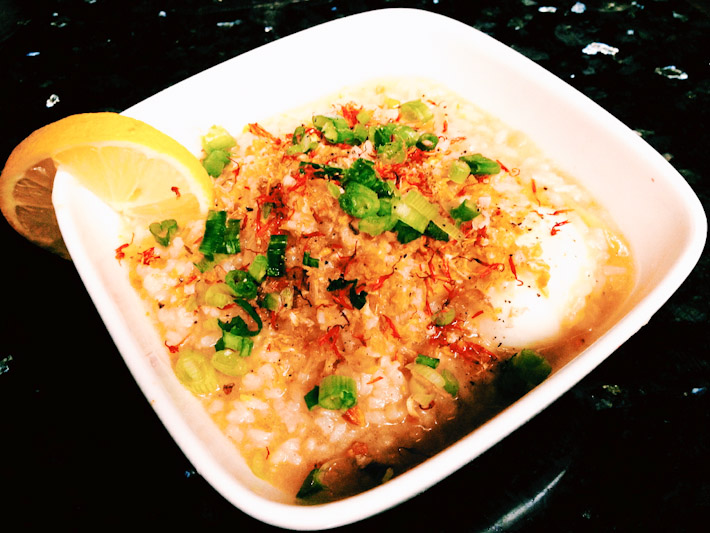
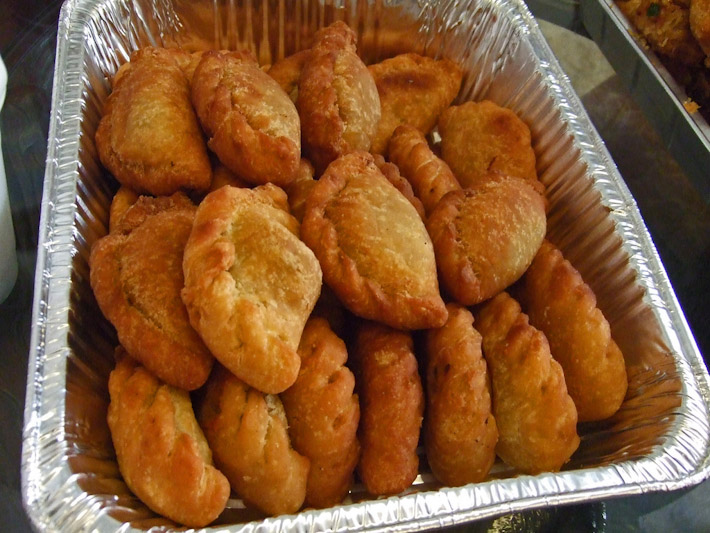
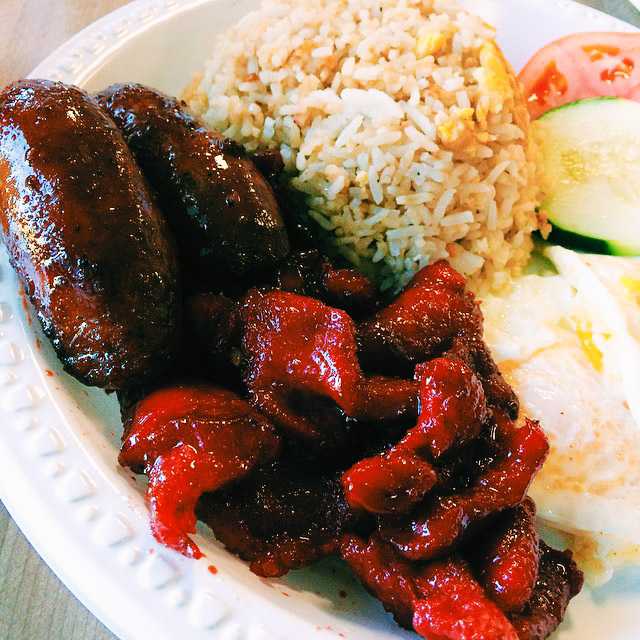
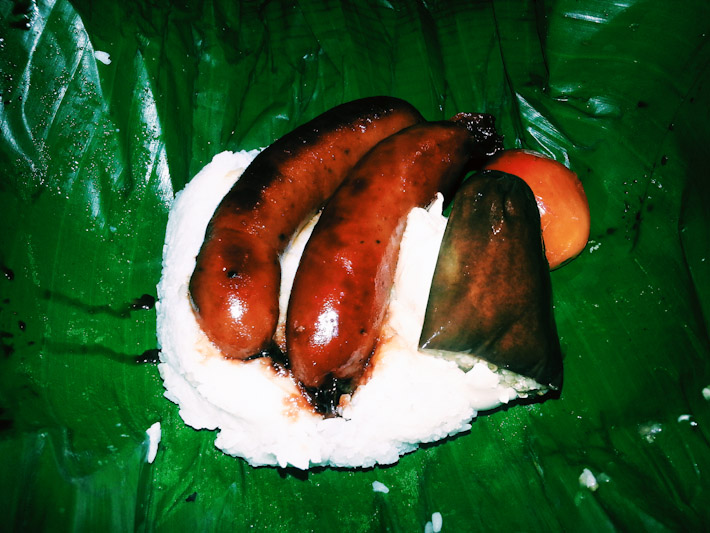
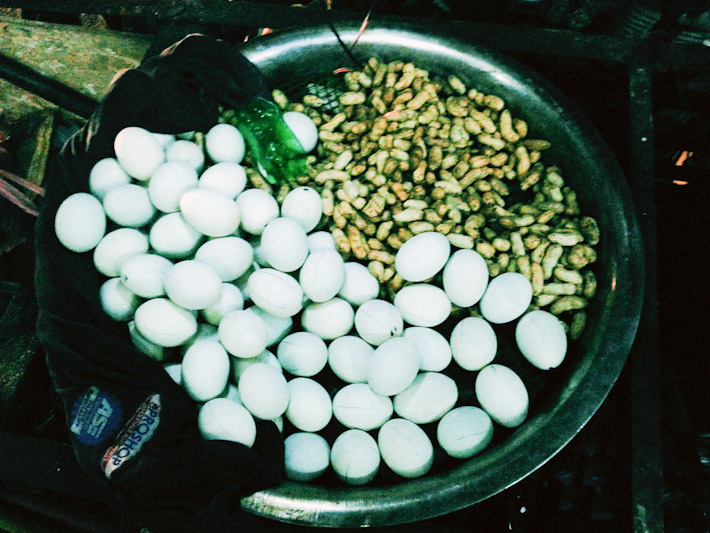
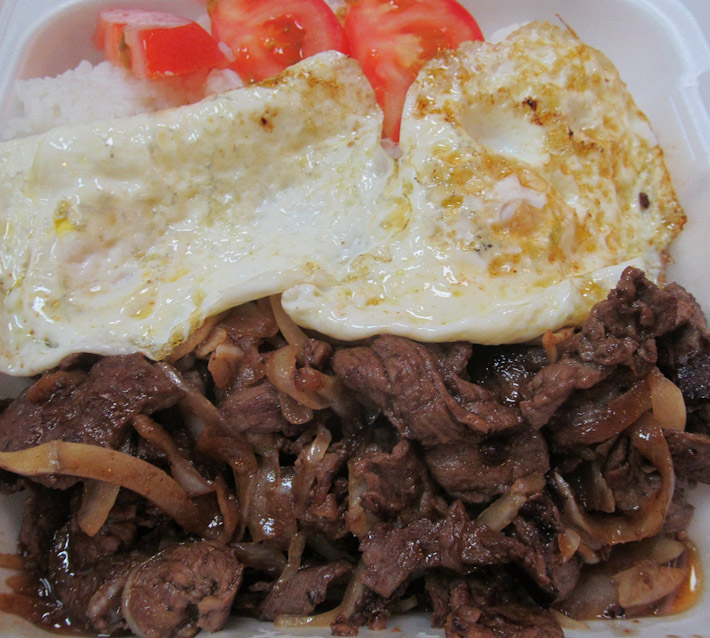
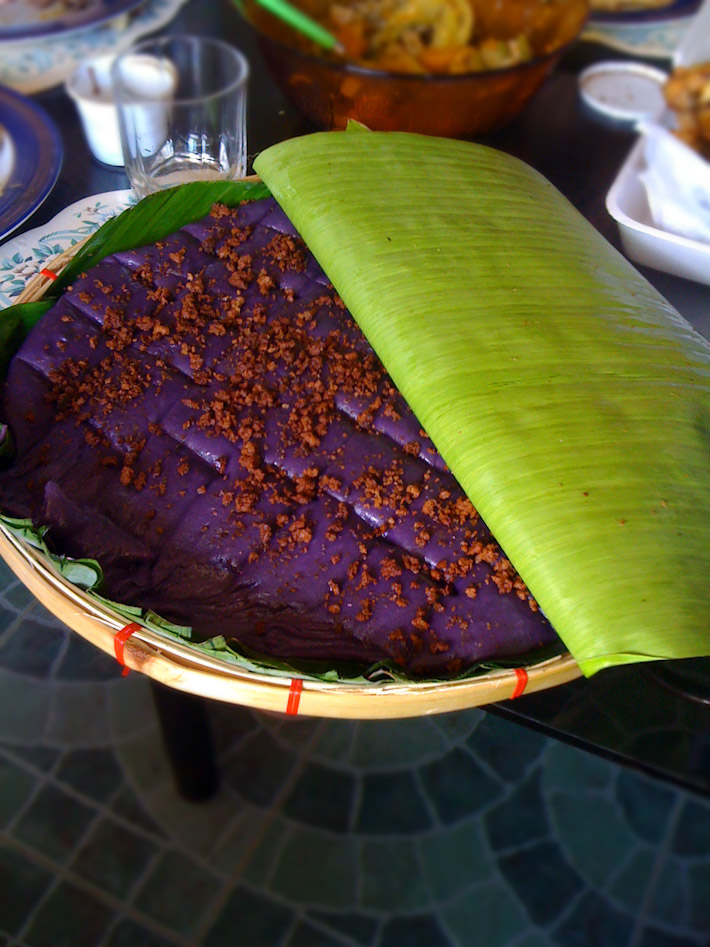
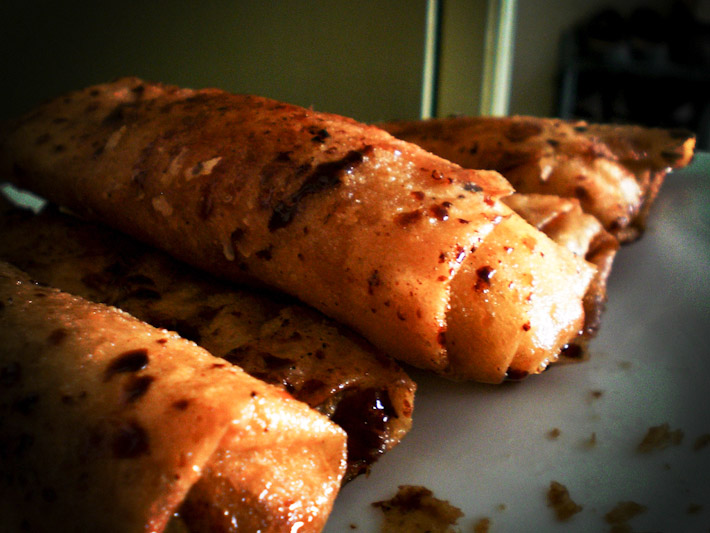
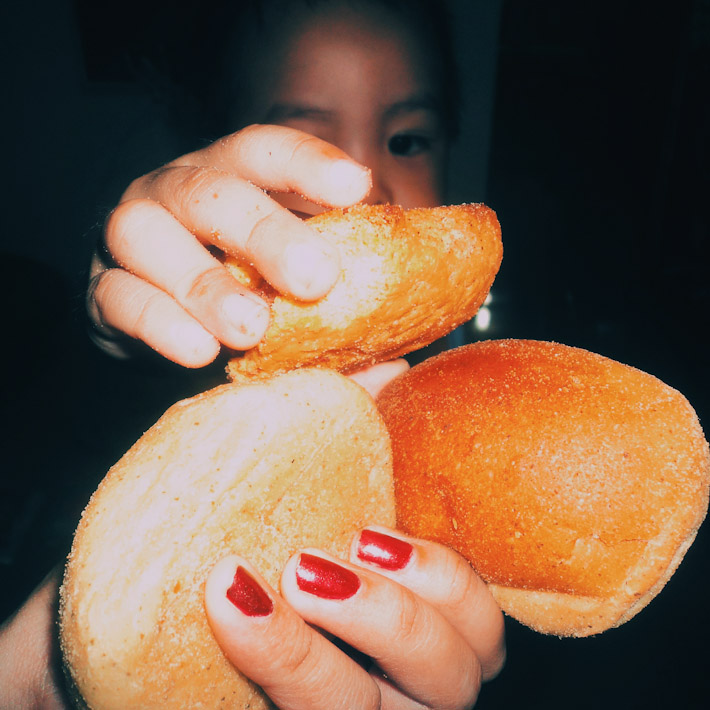
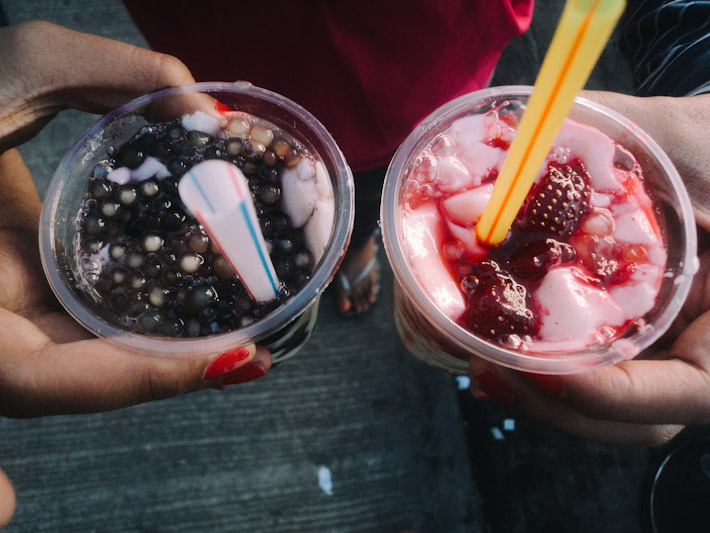
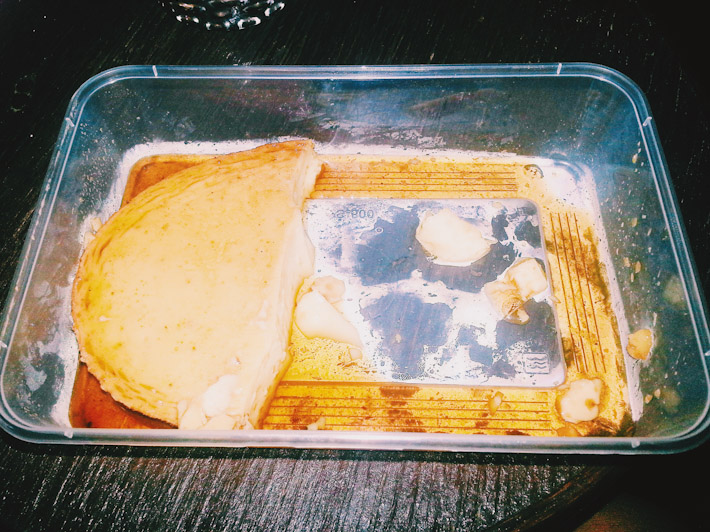
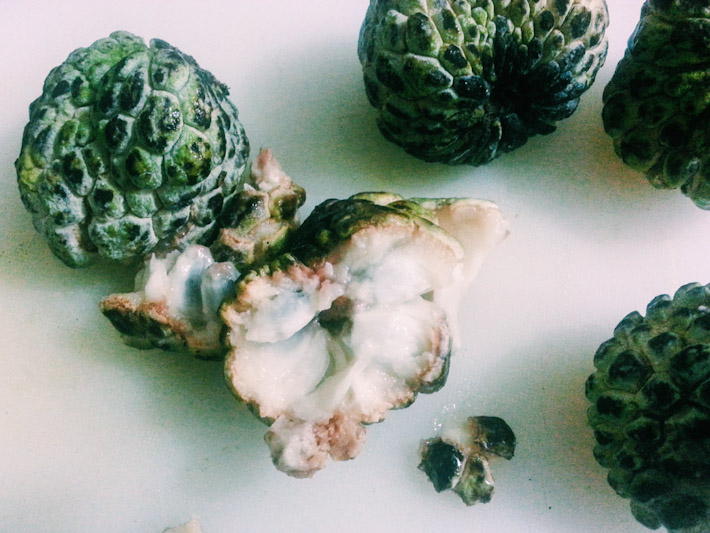
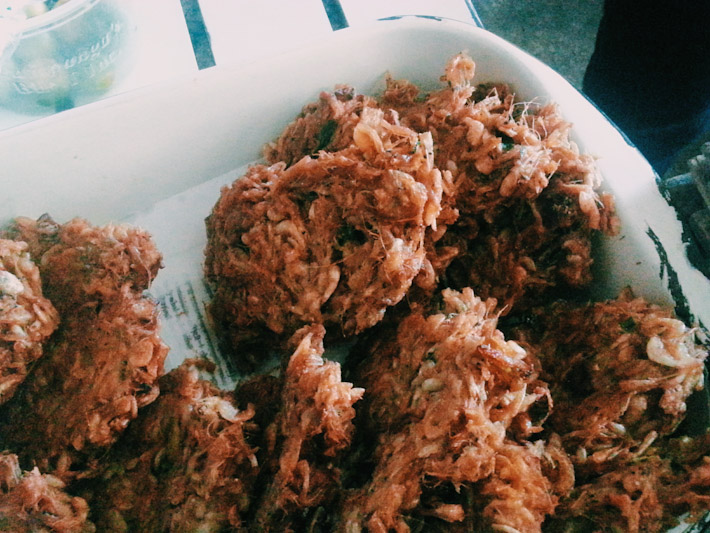
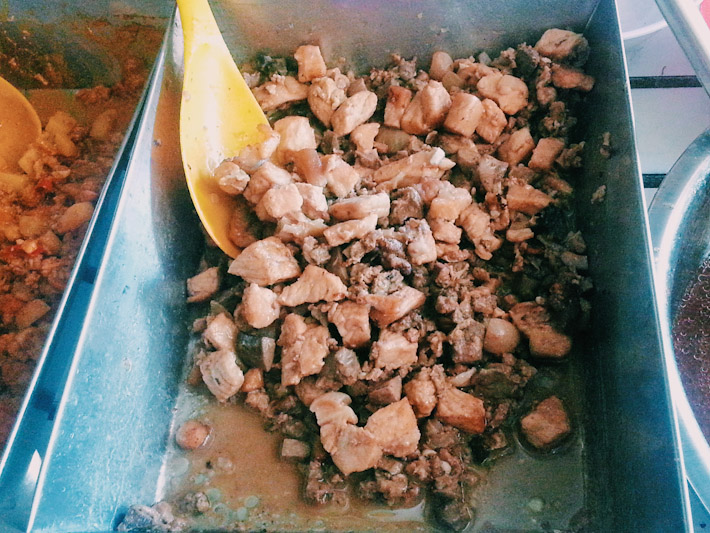
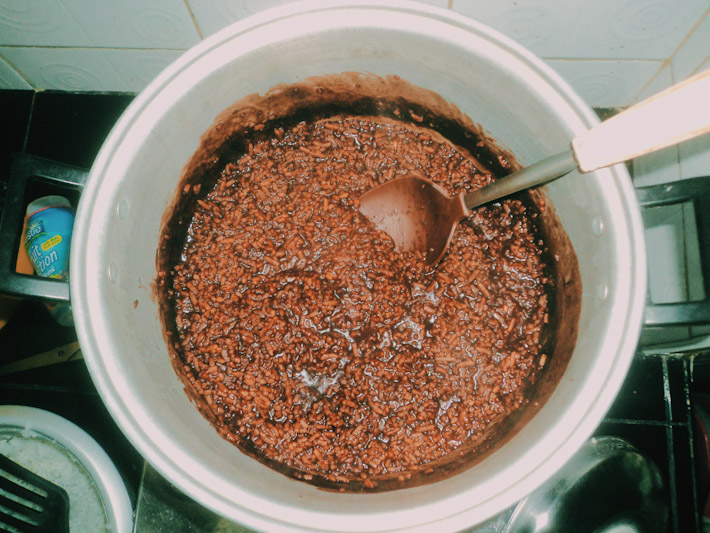

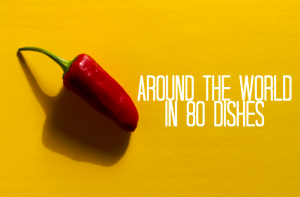


First comment! Ha :) Hey guys, this is an amazing list, also these prices are quite accurate,and here in the Philippines, prices for street food don’t change easily, so anyone trying to budget for food can have a great plan with this list. Yum!
Thanks for commenting, Rachel!
Hopefully we’ll get to visit the Philippines and share a street food meal with you sometime! ;)
the title popped in my email,opened immediately because i thought you’re here in the philippines hahah..
hope you visit our country soon!
Hi Rochiel,
No.. unfortunately, we’re not in the Philippines right now!
But, yes, we plan on visiting sometime. Stay tuned! ;)
“Bibingka” is surely related to a similar dish of Portuguese origin, served in Goa, India… I loved that!
These look yummy, although I’d need to be really careful of the prevalence of pork in Filipino cuisine.
Bibingka is one of the most popular street foods in North Philippines and it’s really yummy! Filipino cuisine they use pork everytime, you will get use to if you visit Philippines!!
Hey Tim!
I know at least one vegan person who traveled and ate successfully around the Philippines.. so, even though pork seems very popular, I’m sure there are plenty of other tasty options too! ;)
Bibingka is made of grind rice and coconut milk in some places in the Philippines. There are places like North Luzon who uses cassava flour, coconut milk, egg and some cheeze toppings. I can assure you guys that no pork on bibingkas.
Yummy looking list!! I hope to make it to the Philippines one day to try a few of these delicious looking things!
Thanks Alex! You will need more than a week to try all the different dishes :)
Clear, informative, simple. Love your post!
I’m glad that you like it Barry!
You guys have spoilt your readers with choice, not bad even vegetarians have some amazing stuff to try in Philippines!
HMM.. YUMMY!! nice :) but wheres Tokneneng (quail eggs) and fishballs??
You are right Berns,fish balls yummy!! I eat them very often :)
Nice post! Now i’m drooling. I’m starting to miss the Philippines. Ive started my blog but haven’t write anything about the Philippines yet! Can’t wait to be home..
Hi! I enjoyed reading your MUST-TRY STREET FOODS and I think I should try some of them :) I hope you would check out mine too!
NOTE that a “Bibingka” for the Ilokanos and the Ibanags has nothing to do with the Tagalogs “Bibingka”. Both Ilokanos and Ibanags ‘Bibingka’ is made from sticky/glutinous rice flour (‘malagkit’) and topped with syrup (latík).
I eat the very same foods sold on the streets, but they have to be prepared at home (in MY home). “Home Foods”. REASON:
* I don’t trust the cleaniness of the raw material itself
* How the foods are being handled
* Quality and cleanliness of the ingredients: oil, spices, etc.
* Street dust and fumes coming from vehicles
* Noise and the crowds
* Crawling insects, flies, mosquitoes, stray animals everywhere…
Looking at the foods makes me so hungry lol. I bet they tasted good!!
Bibingka is one of the best street food that I’ve tried, it was really delicious :) As I’ve read your blog it makes me crave for those food:)
Thanks for your website.. near days I will go to Philippine.. I will try to enjoy the street foods.. Thanks again.. Thomson Huang from Taiwan of China.